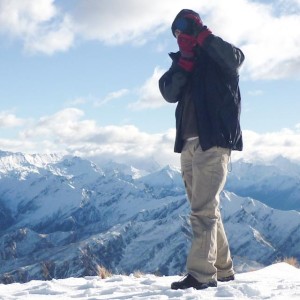
Victoria Falls – “Dr Livingstone, I presume”
David Livingstone, the Scottish missionary and explorer, is believed to have been the first European to view Victoria Falls on 16 November 1855 from what is now known as Livingstone Island, one of two land masses in the middle of the river, immediately upstream from the falls on the Zambian side. Livingstone named his discovery in honour of Queen Victoria, but the indigenous name, Mosi-oa-Tunya — literally “the smoke that thunders” — is also well known. The World Heritage List recognizes both names.
Size
While it is neither the highest nor the widest waterfall in the world, it is the largest. It has a width of 1,708 metres and a height of 108 metres forming the largest sheet of falling water in the world.
Geology
For a considerable distance upstream from the falls, the Zambezi flows over a level sheet of basalt, in a shallow valley bounded by low and distant sandstone hills. The river’s course is dotted with numerous tree-covered islands, which increase in number as the river approaches the falls. There are no mountains, escarpments, or deep valleys which might be expected to create a waterfall, only flat plateau extending hundreds of kilometres in all directions.
Weather affects on River Flow
The Zambezi basin above the falls experiences a rainy season from late November to early April, and a dry season the rest of the year. The river’s annual flood season is February to May with a peak in April. The spray from the falls typically rises to a height of over 400 metres, and sometimes even twice as high, and is visible from up to 48 km away. During the flood season it is impossible to see the foot of the falls and most of its face, and the walks along the cliff opposite it are in a constant shower and shrouded in mist. Close to the edge of the cliff, spray shoots upward like inverted rain, especially at Zambia’s Knife-Edge Bridge. As the dry season takes effect, the islets on the crest become wider and more numerous, and in September to January up to half of the rocky face of the falls may become dry and the bottom of the First Gorge can be seen along most of its length. At this time it becomes possible (though not necessarily safe) to walk across some stretches of the river at the crest.
Summary
We wanted to make sure that there was plenty of water around so we could get a good idea of what the Waterfall is all about. We arrived in Victoria Falls by a commercial flight from Johannesburg to Victoria Falls. The pilot as we approached the Airport made particular point of highlighting the mist from the waterfall for all the passengers to see. This first glimpse demonstrated how spectacular these falls are. They just have to be seen.
Visas
We had on our itinerary to travel to Victoria Falls, Across to Botswana and then back to Victoria Falls to fly back to Johannesburg. Travelling on an Australian Passport, we new we could get a Visa as we entered, but doing Multi Entry, we needed to get our Visa before we left Australia. Whilst this was a little time consuming, the benefits paid off after we landed. – There were two queues – one for Visas to be obtained and the other for people with Visa. Very few of us were in the queue with pre-purchased Visas and this meant we went through with the minimum of fuss.
For more information about Zimbabwe
- Victoria Falls – Zimbabwe – Elephant Ride
- Victoria Falls – Zimbabwe – Hamish enjoys the Falls
- Victoria Falls – Zimbabwe – Helicopter Flight
- Victoria Falls – Zimbabwe – Hotel
- Victoria Falls – Zimbabwe – Introduction
- Victoria Falls – Zimbabwe – Night Safari
- Victoria Falls – Zimbabwe – Sunrise and the Bridge
- Victoria Falls – Zimbabwe – Walk around the Waterfall
- Victoria Falls – Zimbabwe – Walk with the Lions
